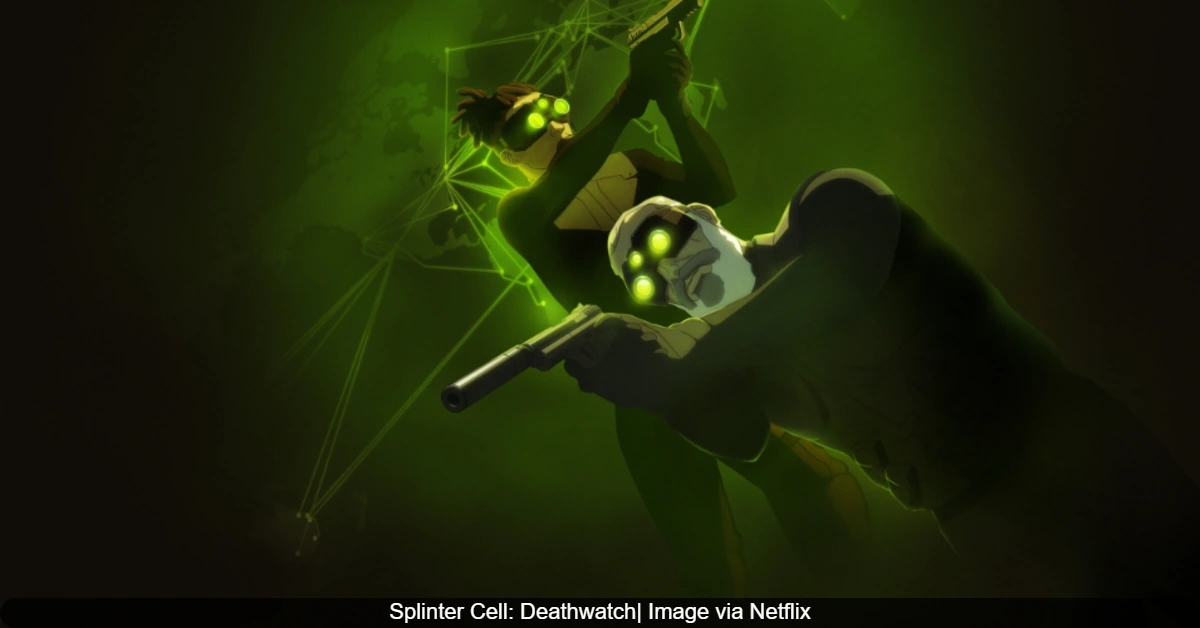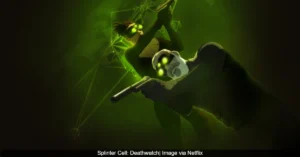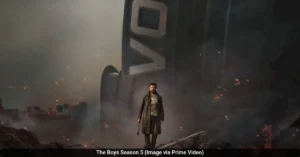The new Netflix animated series Splinter Cell: Deathwatch brings back the legendary Sam Fisher for a mission filled with personal history and global consequences. The eight-episode season, which released on October 14, 2025, ends with a dramatic finale that ties up the central plot while delivering a dark, emotional punch. For those who have finished the show or are just curious about how the story of Sam Fisher and the Shetland family concludes, here is a breakdown of the ending.
The Final Mission Aboard the Lazarev
The climax of the season takes place aboard the Lazarev, a large ship that has been hijacked. Sam Fisher and his new partner, Zinnia McKenna, board the vessel to stop it from crashing into a key energy terminal in Europe. Their goal is to prevent a disaster that would cripple the continent’s power supply.
On the ship, they find that Diana Shetland’s assassin, Freya, has killed the crew and set the ship on its collision course. Sam and McKenna split up to tackle the problem. While Sam heads to the engine room, McKenna makes her way to the bridge to try and gain control of the ship’s navigation. She is ambushed by Freya, and a brutal fight follows. McKenna manages to defeat Freya, who accidentally kills herself with a grenade. McKenna then plugs in a device allowing their technical expert, Thunder, to access the ship’s systems.
However, their mission takes a shocking turn when Thunder discovers he cannot change the ship’s course. It is revealed that the Lazarev’s systems were hacked 20 minutes earlier, and the destination has been changed. The ship is no longer heading for the energy terminal. Instead, it is on a direct path to Xanadu, the man-made island and passion project of Diana Shetland.
Charlie Shetland’s Betrayal and Diana’s Fate
In a phone call, Charlie Shetland reveals to his half-sister, Diana, that he is the one who hacked the ship. While Diana’s original plan was to destroy the European energy terminal to make her Xanadu project the only solution, Charlie had a different vision. He believed her plan was flawed and saw an opportunity for himself.
By crashing the Lazarev into Xanadu, Charlie accomplishes several goals at once. He kills his sister, eliminating the person who constantly dismissed his ideas. He also kills the many world leaders and investors who were on the island for a summit. This creates a huge power vacuum in the European energy market, which Charlie plans to fill by taking control of the family company, Displace.
Diana is killed in the explosion, becoming a victim of her own brother’s ambition. Sam and McKenna are forced to abandon the Lazarev and escape just before the catastrophic impact, which destroys Xanadu and results in hundreds of deaths.
Sam Fisher’s Confrontation with Charlie
In the aftermath, Charlie Shetland holds a public funeral for his sister, pretending to mourn her loss. In private, he celebrates his success and begins moving the company away from green energy and back to its roots in military contracts.
The final scene of the season shows Charlie in his office at night. The lights suddenly go out, and the familiar green glow of night vision goggles fills the screen. Sam Fisher emerges from the shadows, confronting the man responsible for the massacre. Charlie pleads for his life, saying, “Wait. No. Please don’t.” The scene ends with the sound of gunshots, though the action happens off-screen. This strongly implies that Sam killed Charlie, bringing the Shetland family’s violent legacy to a close.
This confrontation is deeply personal for Sam. He was once the godfather to Diana Shetland, and he had also killed her father, Douglas Shetland, years earlier after he became a global threat. By stopping Charlie, Sam ends a cycle of violence that has haunted him for years.
A Deeper Look at the Shetland Family Conflict
The betrayal between the Shetland siblings was driven by more than just business. Throughout the season, it is clear that Charlie resented Diana for treating him as a lesser partner. Diana often pushed Charlie’s ideas aside and kept him away from major decisions, which fueled his anger and ambition.
Charlie’s plan was not just about power; it was about proving himself. He saw Diana’s death as the rise of his own power, even referring to her as his “Phoenix.” However, his victory was short-lived, as Sam Fisher delivered his own form of justice.
The Emotional Weight for Sam and McKenna
Despite their efforts, Sam and McKenna fail to stop the disaster at Xanadu. They are left to deal with the guilt of surviving a mission where so many innocent people died. This failure highlights a central theme of the series: in the world of espionage, even the best agents cannot always save the day.
The relationship between the veteran Sam Fisher and the newer agent Zinnia McKenna is a key part of the story. They are both struggling with the personal costs of their work and the moral compromises they have to make. The ending reinforces the idea that their fight is not just physical, but also a battle for their own souls.
The finale feels like it’s primed to explode, but it winds up as more of a dud grenade… a sharp reminder of why Fisher and McKenna are so disillusioned in the first place. Even with all their gadgets, the preparation, and the backing of the US government, they can’t always win. People die.
The State of Fourth Echelon
In the closing moments, a phone call between Grim and the President of the United States suggests that the future of the Fourth Echelon program is uncertain. This sets the stage for a potential second season where Sam and his team might have to operate without official support, leading to a grittier and more personal type of mission.
The first season of Splinter Cell: Deathwatch is now available to stream exclusively on Netflix.
Also Read: Splinter Cell: Deathwatch Brings Sam Fisher Out of Retirement in New Netflix Series







